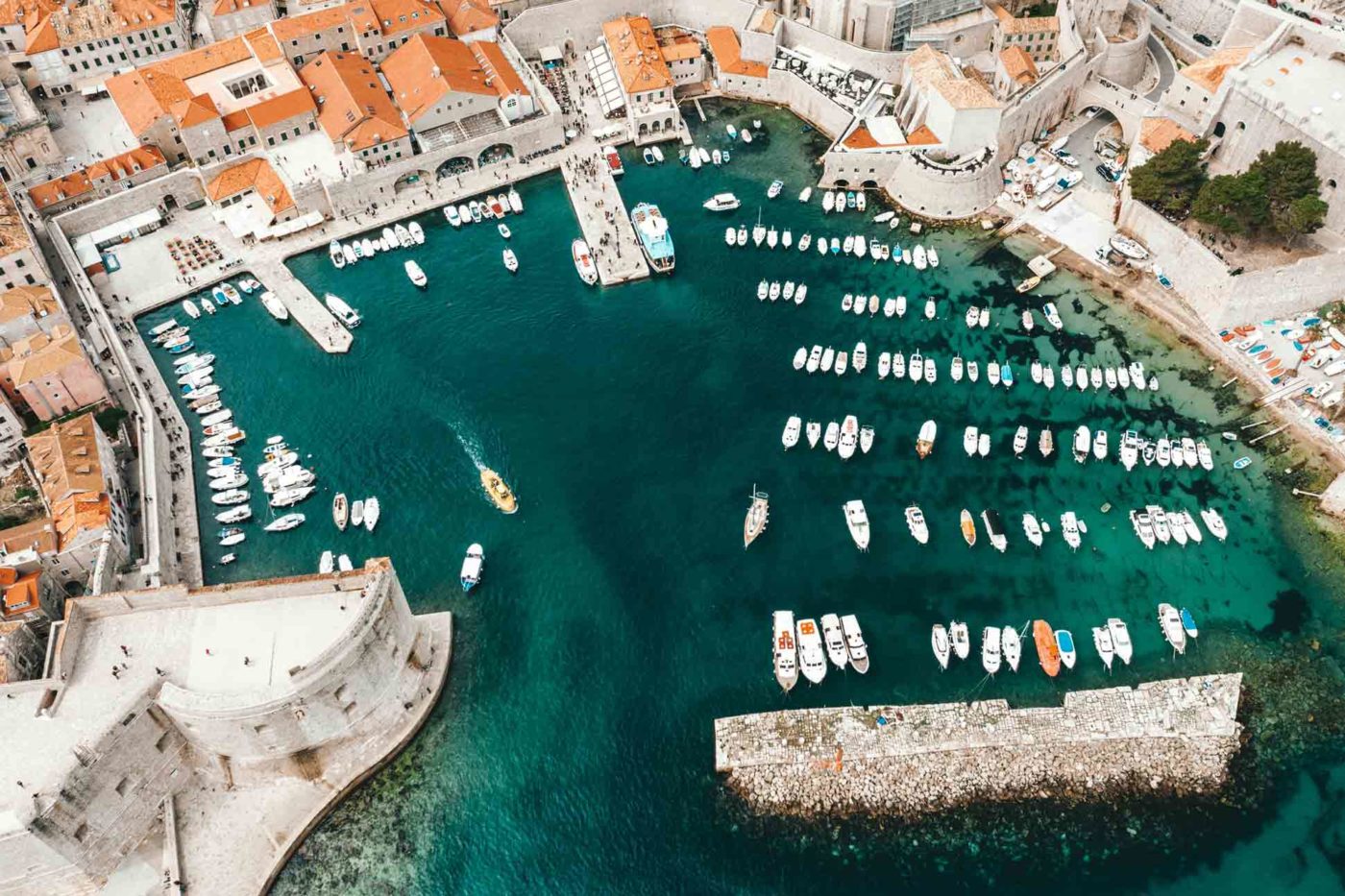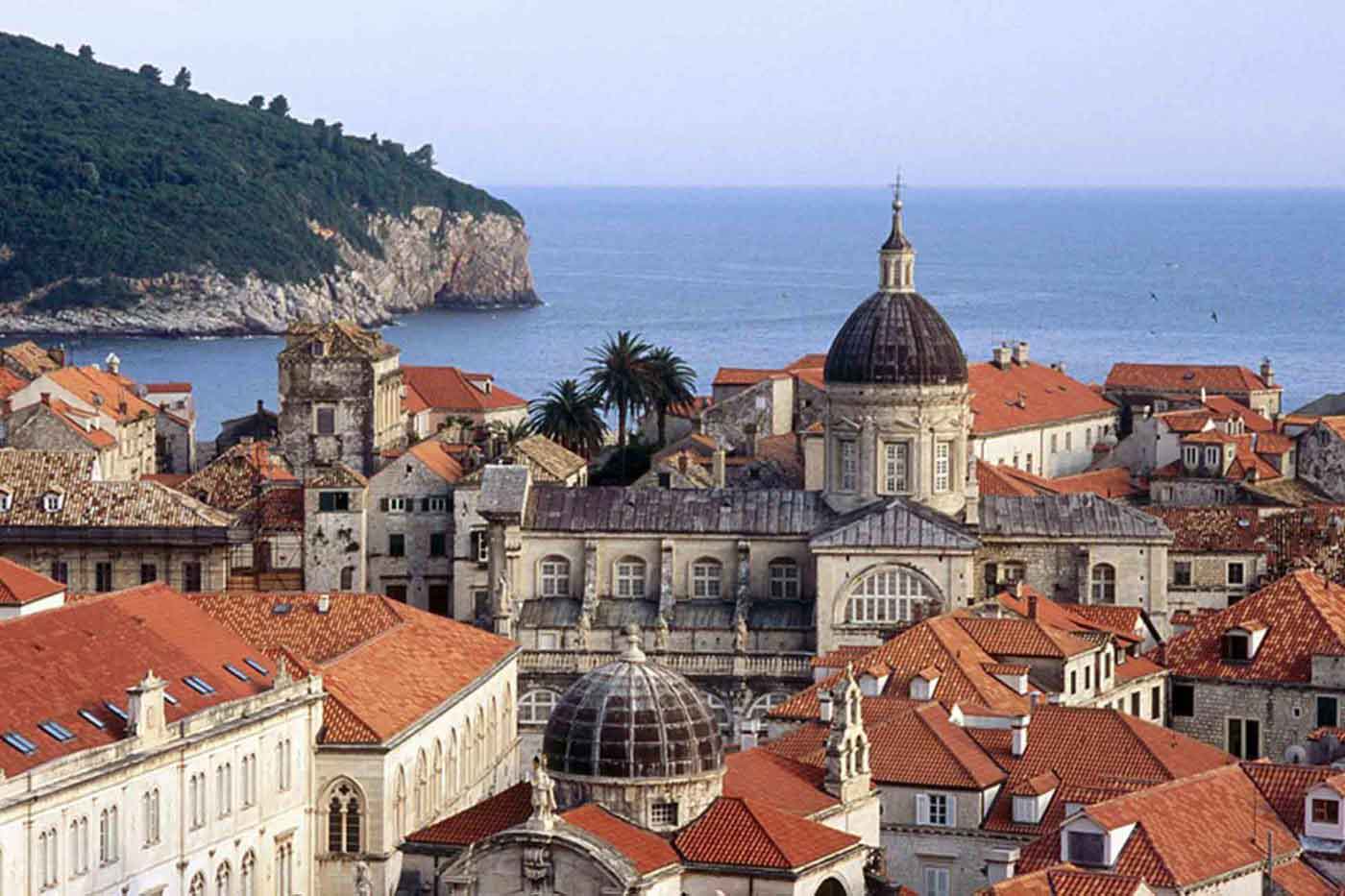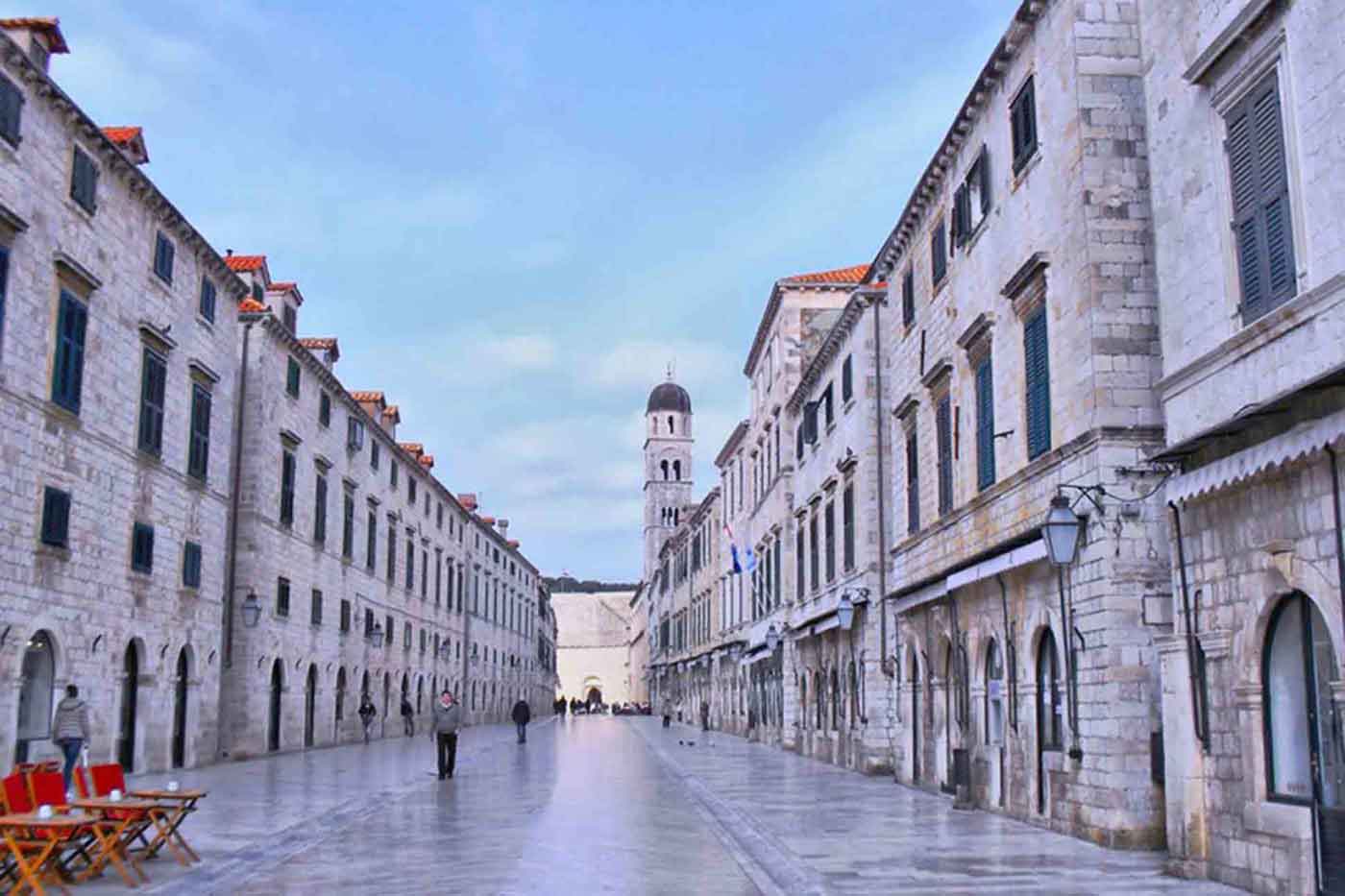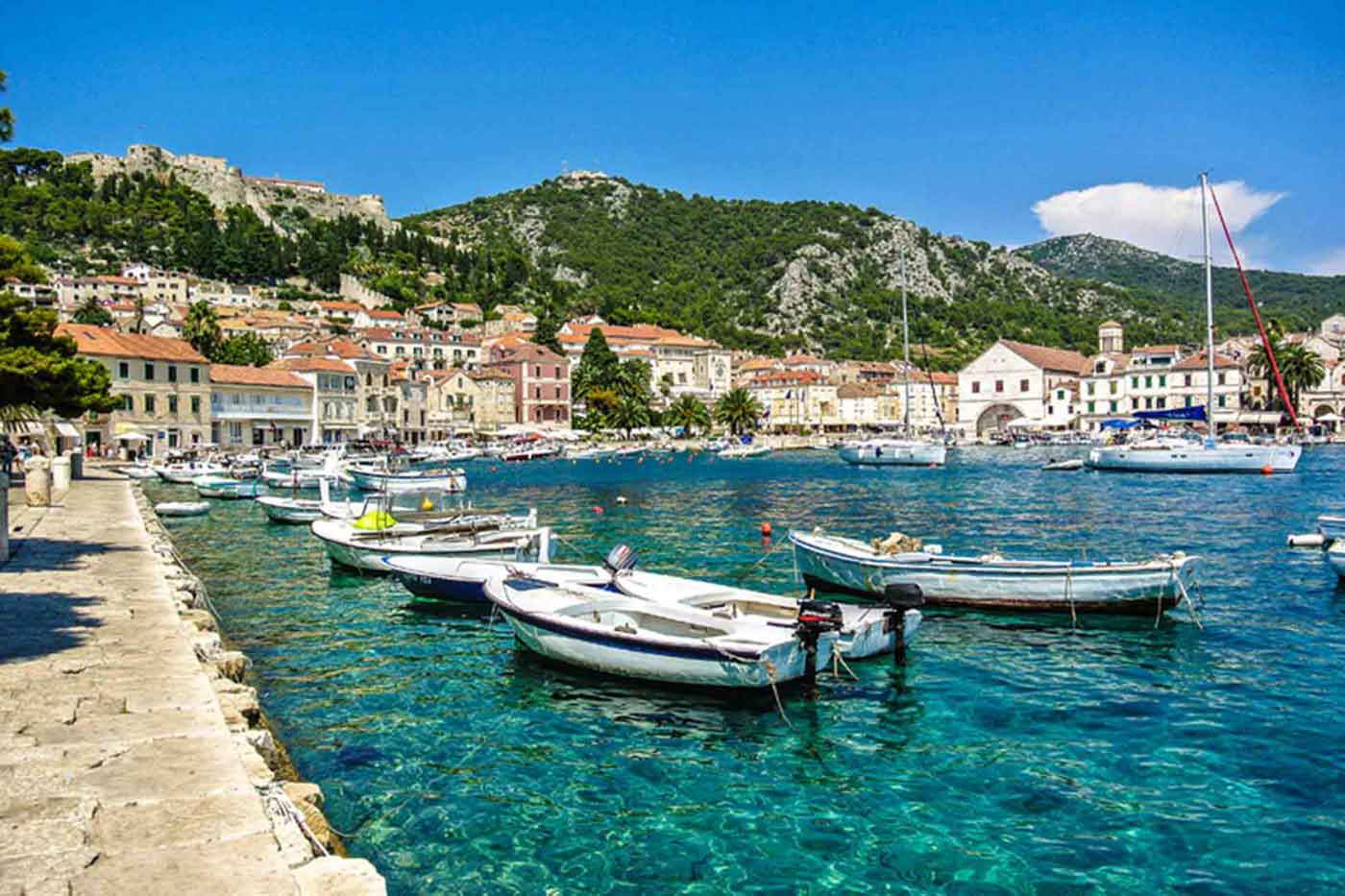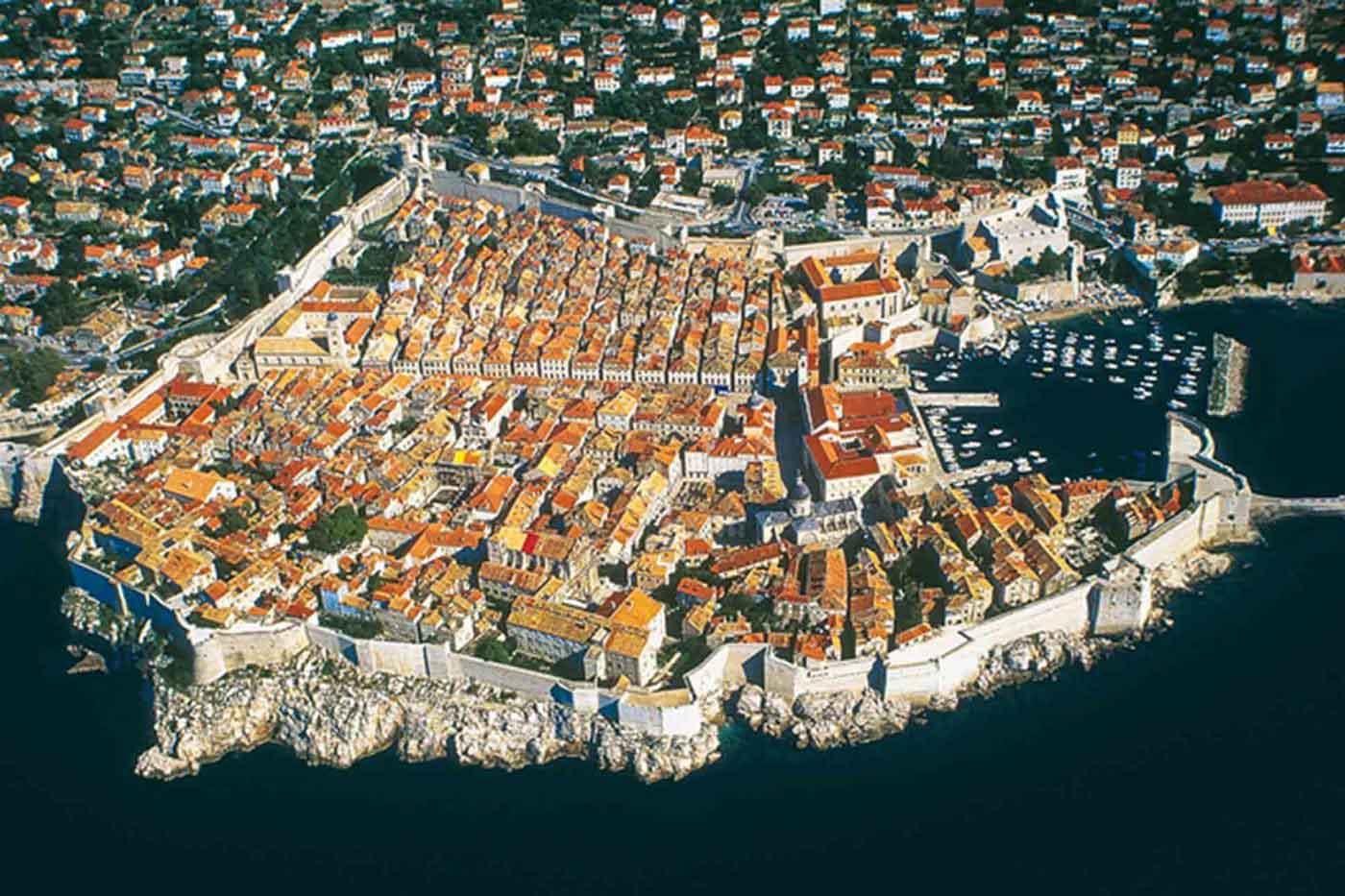So what’s the appeal? It is, without a doubt, picture-perfect. Ever since the 4th century, the Greeks have landmarked the island as a jewel, but its Renaissance architecture is really what makes it uniquely beautiful – so much of it in a small port. Then there’s the natural stuff, a long season from April to October, the islets and secluded bays with white pebble floors and sparkling blue water – take a walk up to the castle and you’ll see exactly why this is the most lauded place in the Adriatic.
Personally, I felt Hvar was too much about the money. It works hard to rival Mykonos or Capri, but I don’t feel it delivers much more bang for its buck. But, to its credit, Hvar has successfully positioned itself as one of the world’s ultimate getaways, easy enough to reach should you have money, but a world away from the riff-raff. For the other half of us, it makes for fabulous people-watching.
All this said, there is a lot more to Hvar. Heading inland, I found spectacular lush orchards of olives and lavender, and beautiful vineyards serving delicious wine. Just outside the city, I fell madly in love with a small, secluded beach, Dubovica. It’s a romantic, picturesque, secret cove, where I wiled away an entire day – a mild trek to get to, but offering a gorgeous reward.
Split
The short drive to Stari Grad harbour was far less taxing than my inbound journey. This is the direct route to the second-largest city in Croatia, after all. As we approached slowly into port, the entire ferry clambered to the front of the boat, I imagined it almost tipping forwards. Intrigued, I joined them to find out why.
It was a dramatic vista, undulating coastal mountains stood majestically, a perfect backdrop to an equally undulating, albeit lower-rise, medieval cityscape. Split has a unique history, birthed from the whim of the Roman Emperor Diocletian in the 3rd century, who built a palace of god-like proportions. It’s neither in ruins nor perfectly preserved, but what I found interesting is how the Croatians have integrated its original structure into everyday life. This was most evident at a bar I visited, where the 1980s decor clashed absurdly with a 1,700-year-old Roman column centre-piece.
There was something far more gritty about Split, its markets, people and the hustle and bustle, that made me feel alive. Split has second-city charm, what Barcelona has over Madrid – and this has attracted a younger, hipper citizenship, not to mention a pan-European approach to life. This aside, it is still delightfully Croatian.
At the far end of the Riva, I found exceptional fish restaurants, the Konoba Marjan standing out. You can’t go anywhere in Split without hearing someone sing the klapa, a melodic Adriatic ditty; and someone will always persuade you to down a shot of ‘rakija’ (grappa) or five. I took a swim in the Adriatic at the city beach with the locals, the complete opposite to the glitzy HVAR, but refreshing never the less.
During my trip across Croatia, I had the pleasure of staying at some of the country’s best luxury properties. In Dubrovnik, I experienced the stunning Presidential Suite at the Bellevue Hotel (its name gives its secret weapon away), complete with glass elevator straight down to its private beach.
In Hvar, I was lucky enough to stay at the Riva Hvar Yacht Harbour Hotel. My balcony, in the heart of the hip yachting scene, was a prime location for a touch of celeb spotting and people-watching.
Whilst in Split I was lucky enough to call the Hotel Luxe my ‘home from home’ – a super-contemporary boutique hotel just moments from the Riva and old town.
Photography courtesy of Spencer Davis (via Unsplash) amongst others


